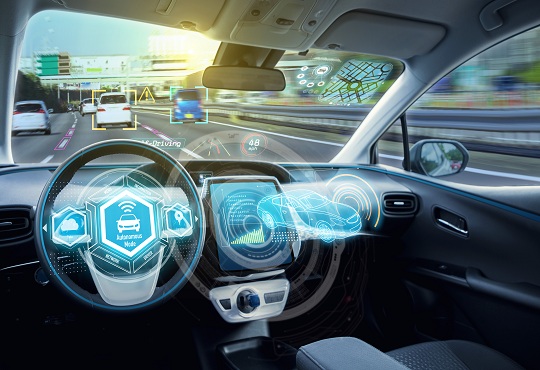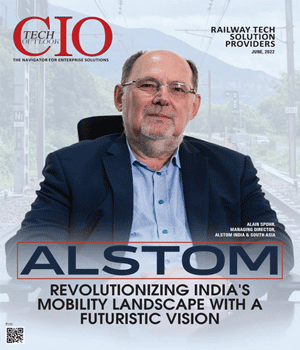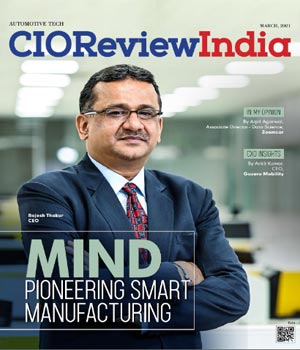
Self-driving Vehicles to Transform the Transportation Industry
Janifha Evangeline | Tuesday, 15 June 2021, 03:40 IST

China’s Huawei Technologies aims to develop driverless passenger car technology by 2025, an executive said on June 12th, as the world’s largest telecommunications equipment maker diversifies its business in the face of the US sanctions. "Our team's goal is to reach true driverless passenger cars in 2025," Wang Jun, a senior executive at Huawei's smart vehicle unit, said in an industry conference.
Some start-ups, automakers, and large technology companies that include internet search leader Baidu Inc are accelerating the work on self-driving vehicle systems and it is anticipated to bring about a greater change to the transportation industry. Self-driving cars have become one of the popular subjects of discussion these days. For several good reasons, autonomous cars are expected to bring about the biggest societal revolution.
What’s driving this interest in Autonomous vehicles?
Some of the advantages of using driverless cars are that they stand to solve various sorts of problems that include traffic delays, traffic collisions. Furthermore, self-driving vehicles will bring to market all sorts of new and exciting applications for numerous industries that include shipping, transportation, and emergency transportation.
Although current Advanced Driver-Assistance Systems (ADAS) offer significant safety functions that include steering assistance and automatic braking, self-driving vehicles and pre-collision warnings take the aforementioned technologies to the next level. It eliminates the need for a driver.
In fact, there are different levels to autonomy, which are as follows:
Level 0: The automated system does not have any control over the vehicle; however, it may prompt the driver about hazards.
Level 1: In Level 1, both the driver and the automated system share control over the vehicle, and such examples can be seen in cars that are equipped with ADAS.
Level 2: Here the automated system is able of taking complete control over the vehicle, but the driver should be ready to intervene if the system fails to recognize a potential hazard.
Level 3: The Automated system takes complete control over the vehicle, therefore, the passenger can safely take their attention away from the driving process, but still the driver must be able to intervene.
Level 4: The Driver can safely divert all his/her attention away from driving tasks and allow the automated system to take complete control and this functionality is presently limited to specified “geofenced” areas and other relatively controlled environments.
Level 5: Human intervention is not required
Accepting autonomous systems
Although the prospect of a car driving itself around the city may look downright terrifying, we must not forget that our planet is filled with multiple autonomous systems which make everyone's lives easier and safer.
For instance, the largest online retailers in the United States, at present utilizes 100000 plus robotic systems in their shipping operations, of which most of them are completely autonomous.
Another instance is whenever we get on an airplane, the majority of the airplane is in the hands of the plane’s autopilot system and this helps pilots to focus on various other critical activities that include navigation, communication, and system monitoring. Hence, we have to look at self-driving cars similar to another automated system, which will over time offer various types of benefits, where most of them are still to be discovered.
Self-Driving Car Technology: How does it work?
Technologies such as radar, ultrasound, cameras, and radio antennas are employed by Self-driving vehicles to navigate safely on the roads.
In modern autonomous vehicles, the aforementioned technologies are implemented in conjunction with each other, since each one provides a layer of autonomy that makes the entire system more robust and reliable.
One such example is Tesla’s driverless car technology known as “Autopilot” which implements 8 cameras to offer 360-degree/complete visibility. In addition to these, the 12 ultrasonic sensors with a front-facing radar work in order to analyze the potential hazards, surrounding the vehicle.
Nevertheless, a key component, which is still in development and that will ultimately make autonomous cars/vehicles reliable is the 5G cellular networks implementation.
Challenges
Only overcoming technological obstacles is not enough for autonomous vehicles to take off but securing public support is vital as well. People need to feel secure and comfortable about riding in a self-driving car, either to use them or buy them. Even though over 40 percent of customers across the world would be willing to use fully autonomous or semi-autonomous cars, they still have some safety and security concerns, where more than half of them are worried about the safety of autonomous cars and over 30 percent are unsure if the technologies necessary for autonomous vehicles to operate are advanced enough.
Reduction in infrastructure spending
In most of the developed economies, owning a car is practically one of the necessities, but, as the number of cars on the road increase, the need for infrastructure upgrades increases along with it.
For example, when you travel the freeways of South California, you will be able to see the efforts of expanding freeways at some point during the commute. Such type of infrastructure spend is aimed to increase the freeways, highways, and street capacities so that they would be able to accommodate more and more cars at a time.
However, this is a circular process, which means that in few more years, as the population increases, additional upgrades are likely to occur.
Why the adoption of Self-driving cars in India is a distant dream
The autonomous car market is predicted to reach USD 37 billion by 2023, according to a recent report by Statista. While the world is getting prepared to commercialize self-driving/autonomous cars, India still stares at a long road ahead. And one of the many hurdles is a policy decision that self-driving cars must clear before being introduced in India.
It is estimated that by 2030, autonomous cars will constitute around 25 percent of all the cars plying on the roads, globally. Currently, there is a lot of Research & Development being conducted in various automaking companies around the globe. For instance, top players such as Tesla, Mercedes, Google, Volkswagen, etc are leading the efforts by leveraging the latest technologies that include AI, ML & Robotics engineering. Even in India, numerous start-ups are conducting R&D with self-driving technology. However, there are still a few challenges, which the country must overcome in order to let self-driving cars to enter into the country.
Some of these include the clear stand taken by the government against the introduction of driverless cars in the country citing job loss as the main reason. Also, Indian roads are not conducive for self-driving cars when compared to the roads in western countries. While most metro cities have roads that overflow with vehicular traffic at any given time of the day, the drivers in the country do not follow traffic rules and jump signals, do not drive in designated lanes as well. Therefore, such kind of reckless driving behavior is something that an autonomous or driverless car would have to be trained to pre-empt. It would be interesting to see how such problems that are unique to the country are resolved.
CIO Viewpoint
The Changing Dynamics of Automotive Industry
By CIOReview India Team
The Transition To Cloud Technology
By T.G. Dhandapani, Ex-CIO, TVS Motor
Making Better Informed Management Decisions
By Ravishankar N, CTO, Spectranet
CXO Insights
Tech Landscape of In-Cabin Experiences and...
By Sanjay Saha, India Country Manager, Synaptics
3 Focus Areas For An Autonomous Driving Revolution
By Varun Chhabra, Vice President, Product Marketing Cloud, Dell Technologies
The Electrified Car Industry Must Reimagine its...





.jpg)
.jpg)
.jpg)





